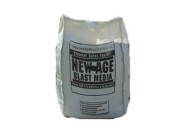 Perma-Chink Systems, Inc
Log & Timber Home Care Experts
Perma-Chink Systems, Inc
Log & Timber Home Care Experts
Michael
"Once again Brad, thank you for your time, patience, consideration, and work to get this out to me. Above and beyond what I was expecting.
Thank you so much!"
Lisa C. in MO
"I am in Texas where the cabin is, so I wanted to send these couple of pictures to you. My brother in law and sister are very happy with the Log Wash, stain and topcoat, he was really impressed Thanks to Kirk Allaire at Real Logs for recommending your product line to us."
Kirk O. in TX
"Great job Perma-Chink and very much appreciated! You made another happy customer— Take care!"
Jennifer S. in TN
"Thank you also for your time and attention to detail. I will review all info you sent and consider the training online as well as Log End Seal and borate. I will forward all this information to our contractor as well so all are on same page. Thanks again and have a wonderful evening:
James P. in CO
"I want to thank you for everything. Your folks are great to work with... Talk to u soon!"
Michael T. in OR
"Brad, I sealed the inside with the Perma-Chink and the Log Gap Caps. These are great products. The Perma-Chink is far better than the original caulk we used 10 years ago. Easy to work with and clean up – great stuff."
John R. in MA
"I purchased my supplies from you again recently. :) Love your products. It’s been on our log home for 20 years! Thanks again. Great customer service every time."
Tina M. in NJ
“Dear Perma-Chink,
What an outstanding donation to Pantry Partners! Thank you for your support. Your thoughtfulness will be remembered and greatly appreciated.
Your very generous donation [272 pounds of grocery items collected from customers attending a Nov 2013 Perma-Chink workshop] makes it possible for the families and the seniors to have a very nice Christmas!
You are great! Thank you.”
Pantry Parners in MT
“I thought you may like to see this. I attended one of your spring seminars this year and learned the necessary steps to use and apply your company’s products. I have to say, each and every product I used (whether I was skeptical or not) performed exactly as it was marketed. I used nearly everything, including the glass media, Osborn brush, Prelude, Ultra 7, Advance Gloss Topcoat, Chink, Check Mate, Energy Seal, Log End Seal, E-Wood and what seemed to be miles of backer rod!
I was amazed by the transformation my client's home went through and equally amazed by the product and continued customer support I received during the application and learning process. My hat's off to Perma-Chink. Great product. Great service. I look forward to the next opportunity I have to work with you!"
Steve S. in ID
“Hi, I was just writing a quick email to thank Brian D. for all the help during the seminar we had last Thursday. There were several qualifying points which he was able to clarify for me that saved me time. I was very impressed with his knowledge set. He was also extremely personable. Thanks.”
Bradley J. in MD
New Age Blast Media Available Sizes
Call 1-800-548-3554 to Order
Features
- Made from recycled glass
- Superior to corn, walnut, sand or soda media
